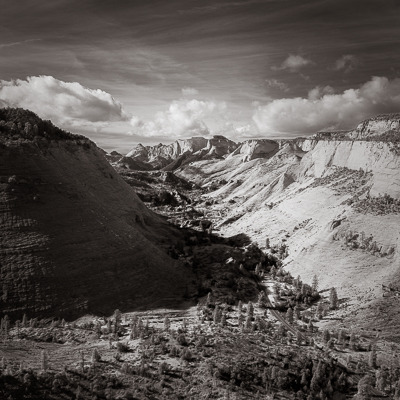Circle of Confusion
December 3rd, 2019As I’ve stated, a lens can only focus on one distance and everything at other distances will be out of focus. There are regions close to the focal plane that are so close to being in focus that we can’t tell that they’re not.
Suppose that I focus on a point-subject 20 feet away and that my camera settings are rendering everything farther than 30 feet away as completely blurry. In this situation a point 1/8th inch past 20 feet is mathematically going to be out of focus but not by much. In fact, even if I inspect the photo at high magnification I might not be able to tell that the spot, which is just slightly out of focus, is any more out of focus than the spot 1/8th inch closer at the plane of focus. This is due to the optical abilities of the lens, the resolution offered by the sensor and the resolution capabilities of my print/display medium.
All of these factor contribute to slightly distort a perfect dot/point and fuzzy-it-up a bit making it indistinguishable from an adjacent dot that is fuzzyed-up by being slightly out of focus. The fuzzing-up of in focus dots as compared to truly out of focus dots is the basis of the circle of confusion.
The circle of confusion is defined as the largest blur spot that will still be perceived as a point by the human eye. As photographers we can take advantage of the circle of confusion and use it to make our images appear to be more in focus than they are.
We do this by adjusting the lens aperture to achieve the desired depth of field that gives us acceptable focus over the range in the scene that we want sharp.

(Fujifilm X100T, 1/125s, f/11, ISO 200, IR Conversion)
